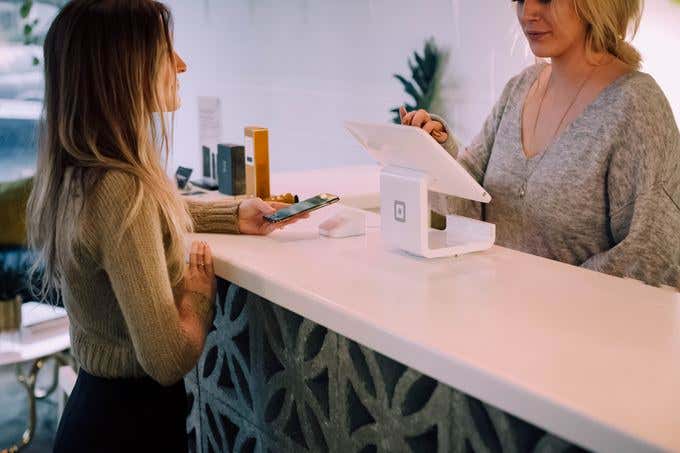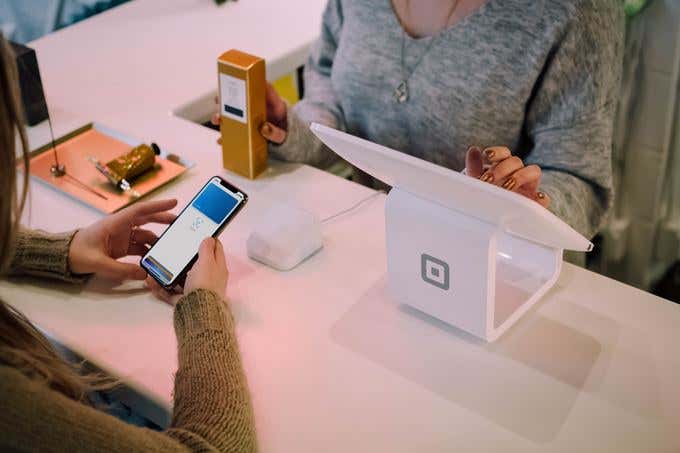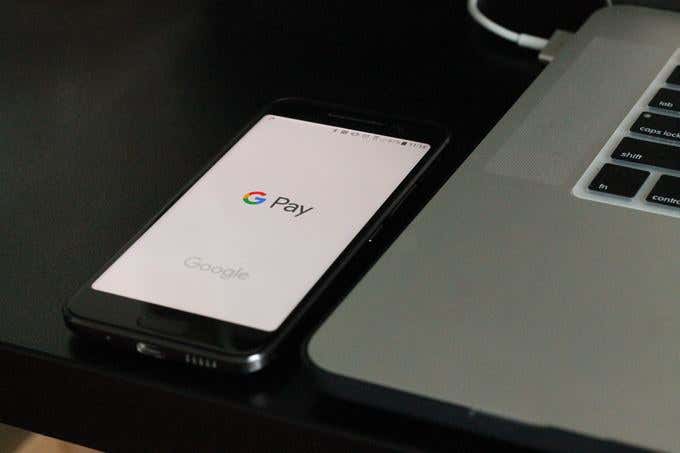Mobile payment apps are increasingly popular today because they’re simpler to use and more secure than carrying physical cash and cards around in a wallet.
Once you store all your reward cards, coupons, credit and debit cards in the app, making purchases is a simple tap and pay process, so you don’t have to dig for your wallet every time.

Two of the most well-known apps are Apple Wallet and Google Pay (formerly Android Pay), both of which work with newer smartphones. They serve virtually the same function, though they differ slightly in their strengths and weaknesses. But which Pay app should you use?
We’re going to look at the two mobile wallets side by side to find out how they work, and which one is best for you.
Apple Wallet

Apple Wallet offers an easy to use, private and secure electronic payment service to users of iPhone, iPad, Mac or Apple Watch. Once you add your credit, debit or prepaid cards to the app on your preferred iOS device, you can start using it immediately.
The app has retail compatibility thanks to the PayPass technology, so you can store loyalty cards and even accrue loyalty points, rewards and benefits as you use it.
In-store, you can pay for purchases at merchants with compatible POS systems or checkout card readers with just a quick press of the side button on your watch or your stored fingerprint. This way you don’t have to enter the security code on your card or verify its expiration date because all your information is on your device.
When you make purchases, each transaction requires authentication with your passcode, Face ID or Touch ID for all iOS devices except the Apple Watch, which is protected by its unique passcode. The transaction information isn’t stored anywhere, but your receipts are kept in the app. Plus, if your device is stolen or lost, you can suspend or remove the ability to pay from it permanently.
You can also send or receive money using Apple Pay through Messages, or you can ask Siri to pay someone from your debit or credit cards stored in the app. If you want to use any money you receive right away, you’ll find it in the Apple Pay Cash card in Wallet. You can also move money to your bank account from the Apple Pay Cash card.
Wallet is accepted in different places including BabiesRUs, KFC, Starbucks, PetSmart, JetBlue, Champs, Ace Hardware, mass transit systems, and with apps and sites like Chipotle, Lyft, Jet, Etsy, Staples, and Ticketmaster.
If you like to give to charity, you can use the app to donate to American Red Cross, Unicef, Feeding America and others.
Google Pay

Google Pay or, informally, GPay, is a mobile wallet from Google, which merged its consumer payment products – Google Wallet and Android Pay – into a single, unified service. This makes it easier for users to add most of their cards like loyalty, gift, credit and debit cards for easier payments and faster checkout with peace of mind.
If you have a compatible device, you’ll see Google Pay in-store, when paying or sending money, online and across Google products.
The app uses near NFC technology in-store to relay your credit card information between the merchant’s card reader and your mobile phone. Simply hold your phone while it’s open to the card reader, and the transaction should go through easily.
If you had stored loyalty or gift cards, credit and debit cards to your Google Wallet or Android Pay apps, you can use them as usual without having to re-add them to Google Pay. You won’t even need to add another app to use it. All it does is update your device automatically to reflect the name in the app.
For most users of mobile payment apps, security is always a top concern owing to the nature of the financial information shared in the app. Google Pay manages this using a virtual account number that keeps your personal information safe and secure on your phone, instead of using your actual credit card number and other sensitive details.
When making purchases, Google sends you a security code to verify the transaction. Unlike Apple Wallet, GPay doesn’t require fingerprint authentication unless you want to unlock the screen, but works with a PIN, password, or pattern. If you lose your phone or it gets stolen, you can lock it and create a new password, or wipe all the information on it completely until you recover it.
If all you want is to send money to family and friends, though, you can try Google Pay Send, which is specifically for peer-to-peer transactions.
Google Pay works with several ecommerce companies’ Android apps including Best Buy, Airbnb, McDonald’s, Chevron, Walgreens, Whole Foods, Houzz, Kayak, Instacart, among several other locations. The list is growing.
Which Is Best – Apple Wallet Or Google Pay?
Picking between Apple Wallet and Google Pay shouldn’t be a hand-wringing decision. As you may already suspect based on the apps’ names, Apple Wallet works with iPhones while Google Pay is made for Android phones.
Both pay apps give you options to authenticate payments from your normal phone unlocking methods. For Apple Wallet, you can use a passcode, fingerprint, Face ID or Touch ID, while Google Pay works when your phone is unlocked with a password, pattern, PIN or fingerprint.
What sets Apple Pay apart is that it supports online purchases through the Safari browser, while Google Pay integrates with other Google services so you can transact in Gmail, Android Messages, Google Home, and other services. If you own a Samsung device, though, you’ll have the option of using Samsung Pay or Google Pay, one of which needs to be set as your default Pay app.
Your choice therefore, will depend entirely on the device you own, in which case you can use the Pay option as an added convenience.